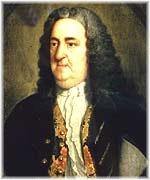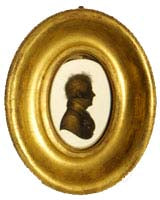Mary, Countess of Belmore: Mistress of the Upper Rooms
Our Theatre has been well attended this week. On Wednesday evening the performances were patronized by Lieut-Col.Sturt and the Officers of the 59th Regiment, for the Benefit of Mr.Tockley. The house was fashionably and numerously attended. The Countess of Belmore bespeaks a Play and Farce to-morrow evening, when, without doubt, there will be an overflowing house. The Salisbury and Winchester Journal Weymouth, October 22, 1813
Bath’s famous Assembly Rooms, known to Austen readers as the Upper Rooms (the much older “Lower Rooms” burned to the ground in 1820 and were not rebuilt) opened in 1771, only a few years before Jane Austen’s birth. Here, as in the Lower Rooms, the fashionable of Bath came to see and be seen, attend balls, concerts and small theatrical events. Assemblies held here provided a public ball with dancing, dining and cards and flirtations galore for all who cared to purchase a ticket. The official website for the rooms explains, "Bath's magnificent 18th century Assembly Rooms were opened in 1771. Known as the New or Upper Rooms (to distinguish them from the older Assembly Rooms in the lower part of the town) they were designed by John Wood the Younger, the leading architect in the West Country.

There are four rooms: the Ballroom; the Tea or Concert Room; the Octagon Room (linking all the rooms), and a Card Room. The Ballroom is the largest 18th century room in Bath. Dancing was very popular and balls were held at least twice a week, attracting 800 to 1,200 guests at a time. The high ceiling provided good ventilation on crowded ball nights and windows set at a high level prevented outsiders from looking in.

The Tea Room was used for both refreshments and concerts in the 18th century (and was sometimes known as the Concert Room).During the evening entertainments there was an interval for tea, the cost being included in the price of a ball ticket. On Sundays there were public teas when admission cost sixpence per person.

The Ballroom and Tea Room are linked by the Octagon Room which was originally intended as a circulating space which could also be used for music and playing cards. On Sundays, when cards were not allowed, visitors could listen to the organ, which once stood in the musician's gallery. A new Card Room was added in 1777 but the architect is not known. The Octagon Room is dominated by Gainsborough's portrait of the first Master of Ceremonies at the Upper Rooms, Captain William Wade. Bath's most famous Master of Ceremonies, Richard "Beau" Nash, never knew this building as he died in 1761.”
Another who was often to be found at the Assembly Rooms was Mary, Countess of Belmore
Born on 17 April 1755, Mary was, by all accounts, a relatively poor girl, with a dowry of only £2,000 when she became the Viscount of Belmore’s 3rd wife, marrying Armar Lowry-Corry, 1st Earl of Belmore in Bath in 1794. The daughter of Sir John Caldwell, 4th Baronet. Through her marriage, Mary Anne Caldwell gained the title of Viscountess Belmore on 11 March 1794. She later obtained the title of Countess Belmore on 20 November 1797.

Armar Lowry-Corry was the son of a wealthy Irish landowner and Politician. When his father declined to run for re-election in 1763, he suggested that Armar run instead. He.was indeed elected, though at a cost of over £3,000, and sat for Co. Tyrone until his elevation to the peerage in 1781. The Earl’s other titles include Viscount Belmore (created 1789) and Baron Belmore (1781), both of which are in the Peerage of Ireland. Armar was less fortunate in love marrying once in 1772 only to be widowed in 1775. His second marriage to Lady Harriet Hobart, daughter of the reigning Lord Lieutenant of Ireland, the 2nd Earl of Buckinghamshire, seemed more auspicious, but it also ended in tragedy. On 6 January 1781 Lowry-Corry was raised to the peerage as Baron Belmore, and on 15 June 1781 he and his wife entered into a deed of separation by which he agreed to pay her £1,000 a year. They were never reconciled and the marriage was finally dissolved by divorce in April 1793 (at a cost to Belmore in legal and parliamentary fees of well over £4,000.) Fortunately for both, the third marriage was, by all accounts, a happy and content arrangement which lasted until the Earl’s death in 1802. The couple’s home, Castle Coole, is now owned by the National Trust.  After the Earl’s death, Lady Belmore moved to Bath in 1805 and lived at 17 Royal Crescent for thirty years until her death on 13 December at the age of eighty-six. For a long time she presided over balls held in the Assembly Rooms; and it was here that Dickens must have encountered her, probably in 1835. He completed Pickwick Papers shortly afterwards, and immortalised the dowager countess as Lady Snuphanuph in the chapters of the novel that deal with Mr Pickwick's experiences in Bath. (Chapter 35) She is buried at Caledon, County Fermanagh, Ireland. Today, the Assembly Room is owned by the National Trust and open for visitors. The basement houses Bath’s exquisite costume collection, featuring original items from a variety of time periods. Though #17 is not available, #1 Royal Crescent has been turned into a museum, showing what these apartments would have looked like in the19th century, at the height of their fashion. This article incorporates text from the public domain 1911 Encyclopædia Britannica located at Wikipedia as well as from They Came to Bath.
After the Earl’s death, Lady Belmore moved to Bath in 1805 and lived at 17 Royal Crescent for thirty years until her death on 13 December at the age of eighty-six. For a long time she presided over balls held in the Assembly Rooms; and it was here that Dickens must have encountered her, probably in 1835. He completed Pickwick Papers shortly afterwards, and immortalised the dowager countess as Lady Snuphanuph in the chapters of the novel that deal with Mr Pickwick's experiences in Bath. (Chapter 35) She is buried at Caledon, County Fermanagh, Ireland. Today, the Assembly Room is owned by the National Trust and open for visitors. The basement houses Bath’s exquisite costume collection, featuring original items from a variety of time periods. Though #17 is not available, #1 Royal Crescent has been turned into a museum, showing what these apartments would have looked like in the19th century, at the height of their fashion. This article incorporates text from the public domain 1911 Encyclopædia Britannica located at Wikipedia as well as from They Came to Bath.



Leave a comment
This site is protected by hCaptcha and the hCaptcha Privacy Policy and Terms of Service apply.